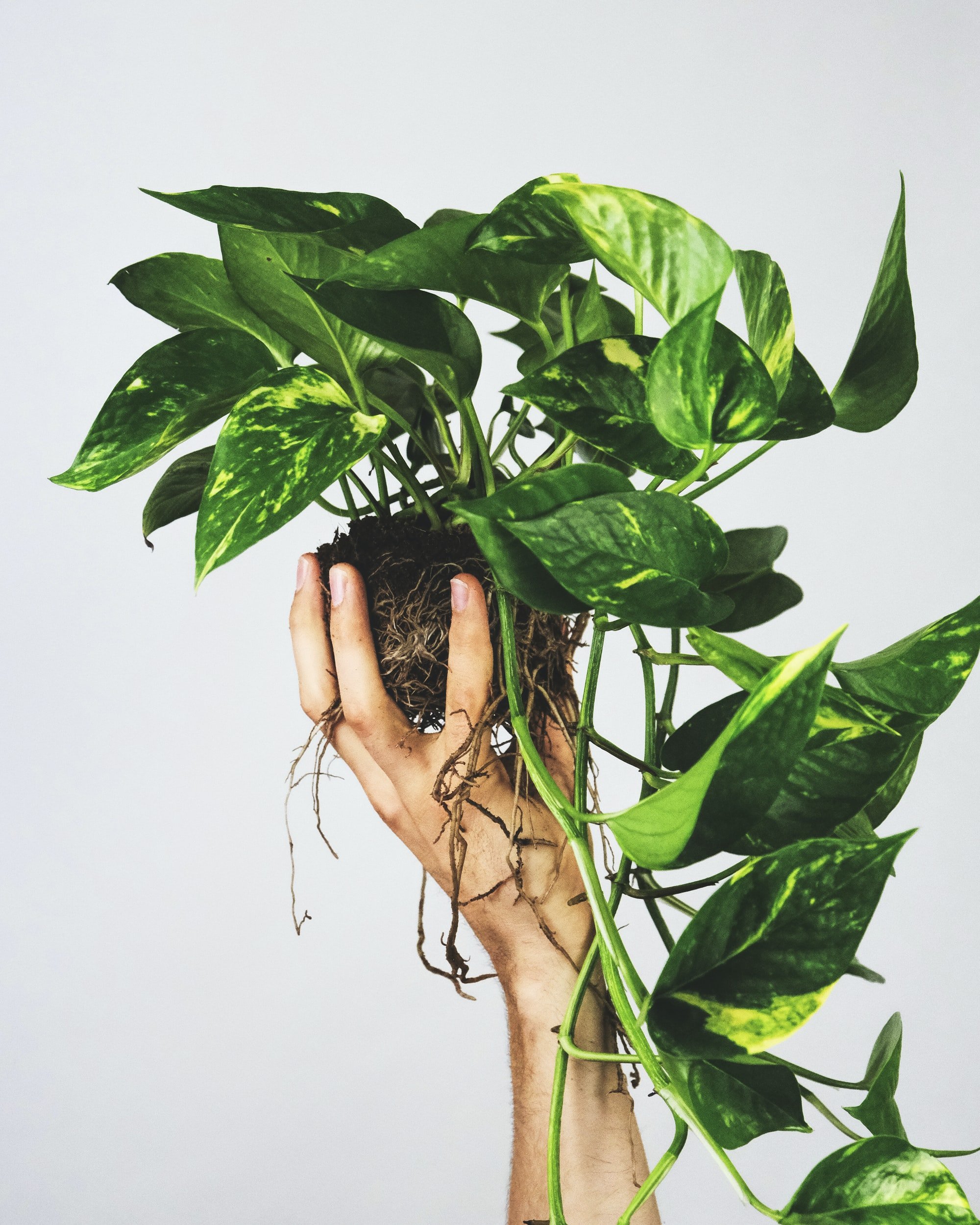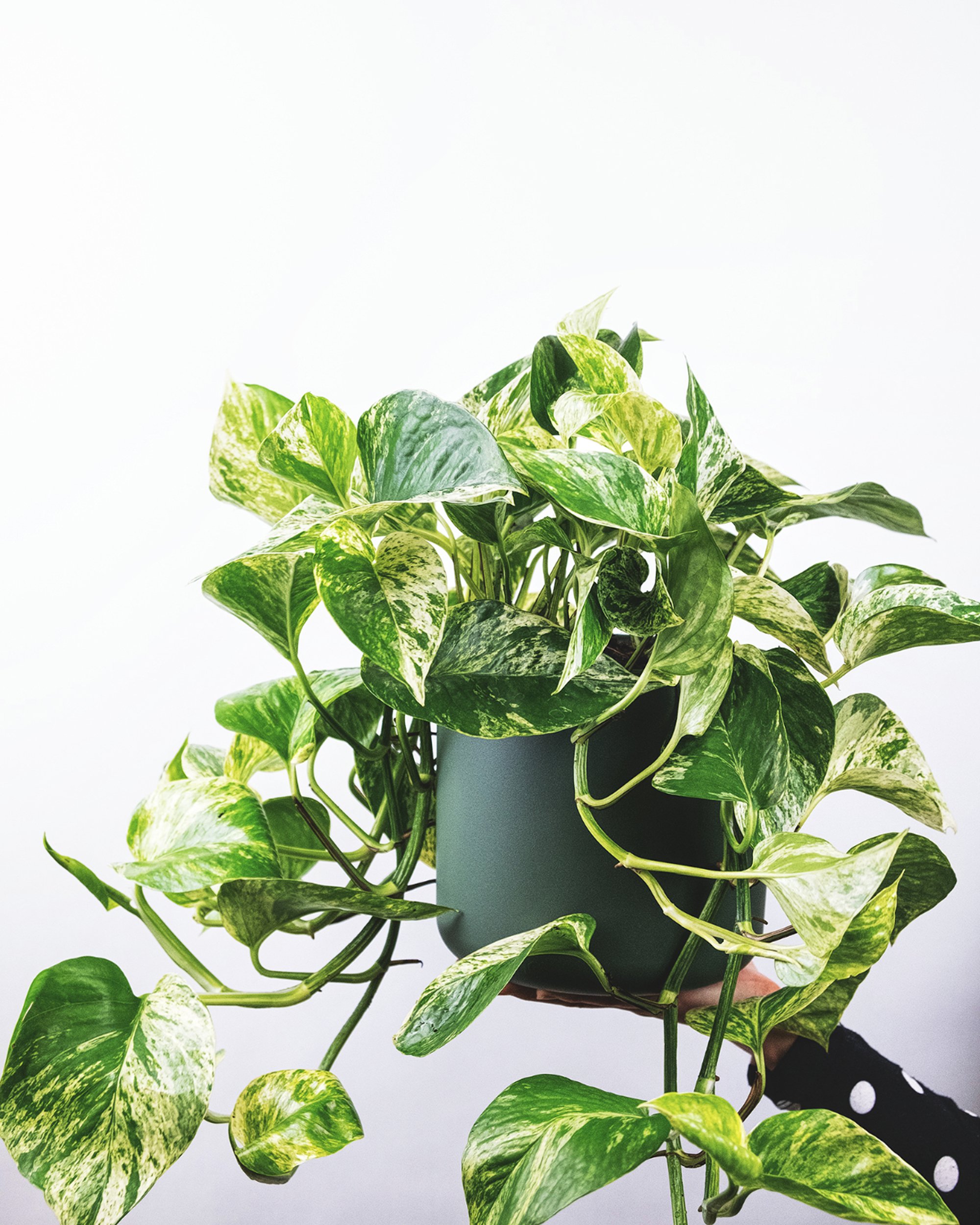Plant Profile
Golden Pothos
a.k.a. Devil’s Ivy // Taro Vine // Epipremnum Aureum
The Golden Pothos is known as being one of the easiest houseplants to look after as it will thrive in almost any condition. A trailing plant with heart shaped leaves, the Golden Pothos looks best when displayed as a hanging plant or is an attractive addition to a bookshelf or mantlepiece. It is also a brilliant choice of houseplant due to it being rated one of the best air purifying plants for its ability to filter harmful chemicals like formaldehyde, benzene and xylene from the air.
Top Tips
✔ Cut the Golden Pothos back to control its shape and length and avoid it getting too leggy. Pruning regularly will also help to encourage new growth.
✔ Gently wipe the leaves to remove any dust.
Plant Care
-
The Golden Pothos is tolerant of most light conditions, however it will grow best when receiving bright, indirect light.
-
Allow the top soil to completely dry out between waterings. The plant is tolerant of drought periods but will not enjoy being overwatered.
-
Although the Golden Pothos can survive lower levels of humidity, it definitely prefers higher humidity. Positioning the plant in a bathroom or kitchen is ideal, if placed elsewhere make sure to mist it every other day to help boost humidity levels.
-
The Golden Pothos doesn’t require much feeding, apply a general purpose fertiliser once a month during the summer.
-
The Golden Pothos isn’t too fussy about temperature and will do well at normal room temperature.
-
This plant is toxic if consumed so keep away from children and pets.
-
Propagating a Golden Pothos is relatively easy. Firstly cut off around 4-6inches of healthy stem (each stem should have at least 4 leaves). Then place your cut stems into a glass of water. Once roots have been showing on the cuttings for around a month, plant them into soil and treat it any other plant. Make sure to plant cuttings in soil as soon as possible so that the plant can begin receiving nutrients.
-
Once the Golden Pothos has outgrown its pot and become root bound it is time to repot. Choose a pot that is one size larger than the one you are taking the plant out of.



Quick Plant check up
Yellow leaves
This suggests that the plant has received too much direct sunlight. If your plant is positioned close to a window move it further away so that it is receiving bright, indirect light.
Brown spots on leaves
This is most likely the result of overwatering. Make sure that you are allowing the top soil to dry out between waterings.
Wilting
This will be the result of underwatering the plant, and a sign that it needs a drink asap!



